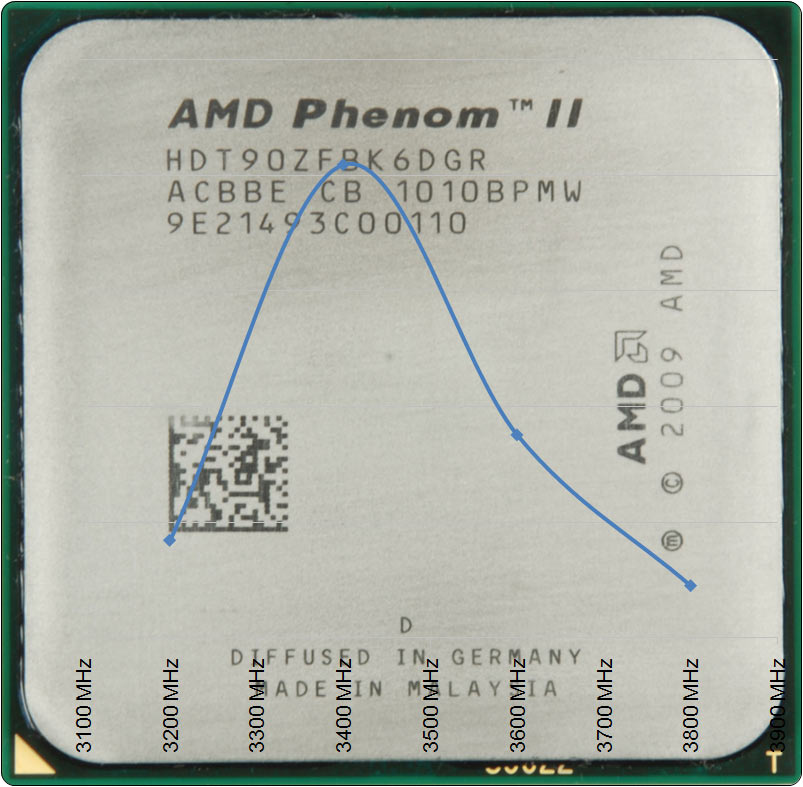Efficiency: Optimizing The Clock Rate Of AMD's Phenom II X6
AMD’s six-core CPU is affordable (at least, compared to Intel's Core i7-980X). We're overclocking the Thuban design to see if its efficiency improves from faster clock rates. Comparisons to other quad- and hexa-core processors provide some perspective.
Overclocking AMD’s Six-Pack
The new Thuban-based six-core Phenom II X6 processor is available in two different flavors: 2.8 GHz and 3.2 GHz. Both come with the new Turbo CORE feature that dynamically increases the clock rate of up to three cores. However, the Phenom II X6 doesn’t necessarily run at maximum efficiency when it's operated at stock speeds. In fact, a reasonable overclock provides a solid increase in performance per watt.
Today we determine the ideal clock speed and look at the maximum overclocking speeds using air cooling, because this is where you want justification for spending those extra dollars compared to quad-core processors.

AMD is Back
The new Phenom II X6 processor could be a turning point for AMD, helping the company back into the performance segment, despite the fact that it still trails Intel's Core i7 CPUs by a measurable margin. Intel still has a major advantage in overall performance thanks to higher performance per clock, and it also maintains the lead when it comes to power use due to its efficient Nehalem architecture. Some of the company's newest CPUs employ 32 nm manufacturing, which serves to extend Intel's lead in efficiency. If you're looking for a definitive statement to describe the state of desktop processing, Intel is technically superior. Period.
However, Intel’s benefits don’t come cheaply. The flagship Core i7 CPUs cost roughly four times more than AMD’s six-core Phenom II. And you certainly don't get four times more performance, either. It's more like a quarter or a third more. Hence, these products are only attractive to professional users and the lucky ones with loose budgets.
The six-core Phenom II X6 is much more affordable, though it can’t pull away from solid quad-core offerings when it comes to gaming and single-threaded threaded applications.
Mainstream price points are probably more relevant for most of us. You could either say that Intel is gouging because it can or that AMD is more aggressive on pricing because it has to be, but our overall experience tells us that you get more value in the AMD portfolio. AMD just refreshed this unwritten law by positioning the six-core CPU at around $300. You can argue that this equals a 50% cost increase compared to the Phenom II X4, or decide between a mainstream Intel quad-core and AMD hexa-core CPU instead.
Stay On the Cutting Edge: Get the Tom's Hardware Newsletter
Get Tom's Hardware's best news and in-depth reviews, straight to your inbox.
Optimizing Thuban
The six-core AMD portfolio is still very young and so far includes two models: the Phenom II X6 1090T at 3.2 GHz (up to 3.6 GHz Turbo CORE speed) and the Phenom II X6 1055T at 2.8 GHz (3.3 GHz max). The latter only costs $199, which makes the six-core story much more appealing for mainstream users with scalable workloads in their daily routine. We took the 3.2 GHz 1090T and overclocked it in 200 MHz increments to see how fast it can really go. From this, we determined the clock speed that delivers the highest performance per watt.